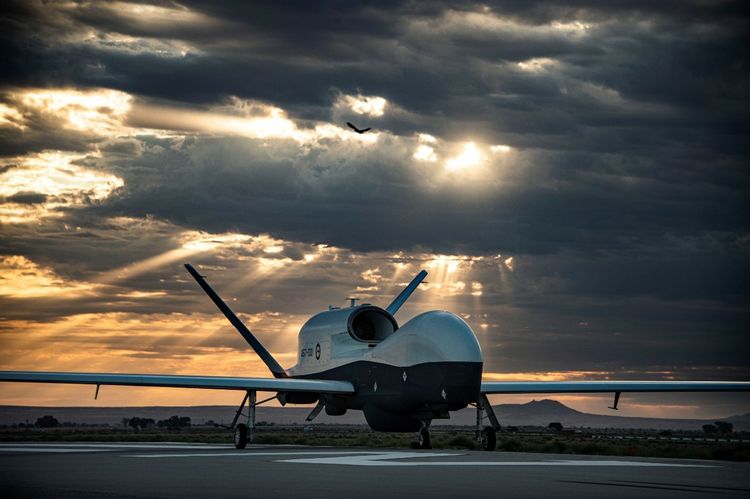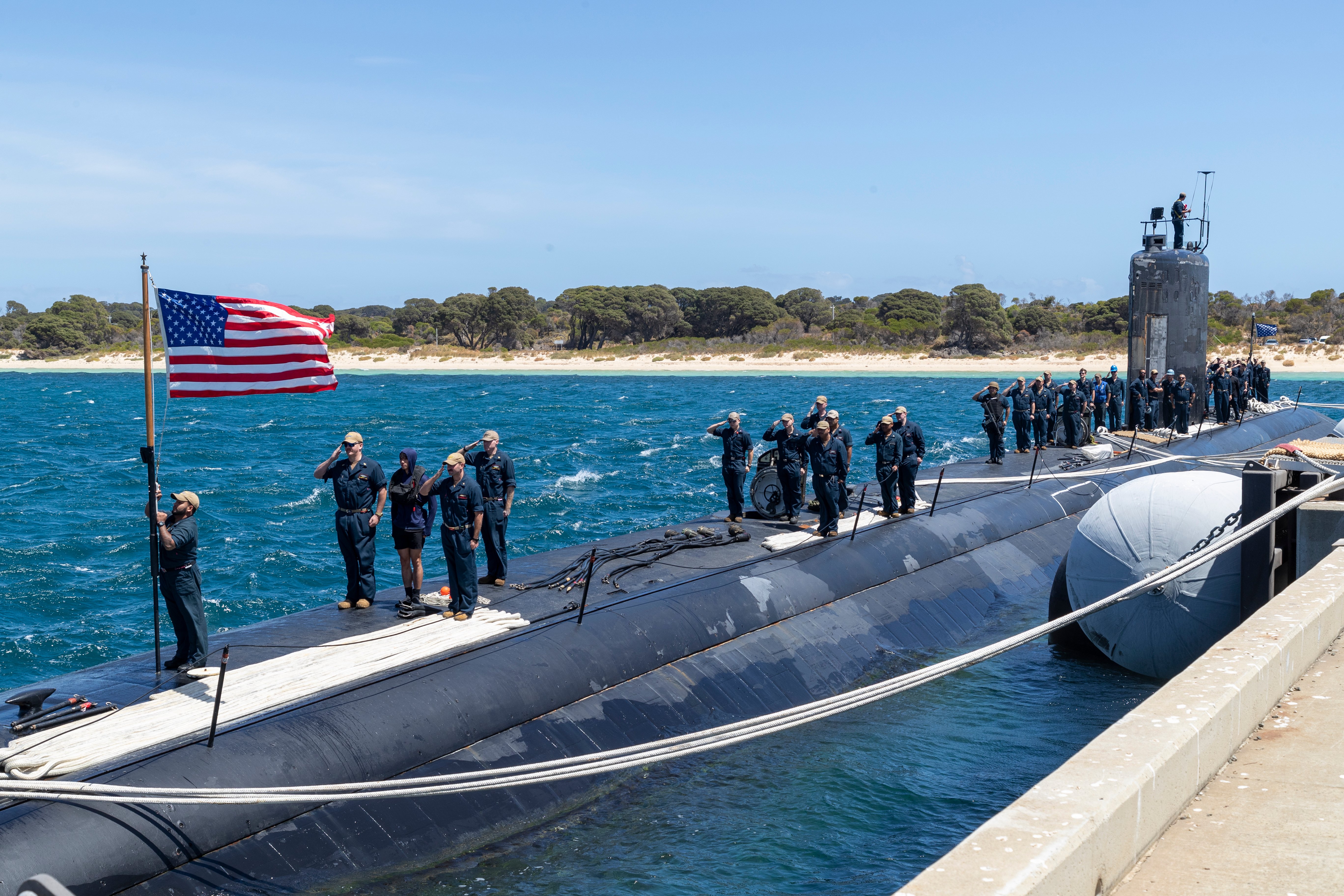
The Royal Australian Air Force will reactivate a squadron for the three MQ-4C Triton unmanned aerial vehicles it will start operating in 2024, Australian Defense officials announced Friday.
Australian Deputy Prime Minister and Defense Minister Richard Marles and Chief of the RAAF Air Marshal Robert Chipman announced the reformation of the squadron in a joint press conference at the Avalon Airshow held in Geelong, Victoria, Australia. The squadron was deactivated in 1989. The new squadron will be based at RAAF Edinburgh in South Australia, though the MQ-4s will operate out of RAAF Tindal in the Northern Territory, Marles said.
“It can fly for up to 24 hours, and it will be able to provide the persistent reconnaissance and surveillance of our northern maritime approaches, which is so important in terms of the defense of our nation,” said Marles, who added that the MQ-4 will also be able to conduct surveillance on illegal fishing not only in Australian waters, but also in the waters of its Pacific neighbors.
“So it’s a really exciting capability,” he added. “We’ve got three on order. The first comes into the possession of the Commonwealth next year.”
Marles declined to say whether Australia would purchase additional MQ-4s beyond the three currently under contract. A 2016 Australian Defense White Paper said Australia would acquire a total of seven. But former Prime Minister Malcolm Turnbull in June 2018 announced Australia would buy six.
“But at this stage, we’ve got three that are on order, and that’s the extent of our acquisition” Marles said.
So far, Australia is the only other operator of the MQ-4 besides the U.S Navy.
RAAF No. 9 Squadron was formed in 1939, operating amphibian aircraft deployed on Royal Australian Navy (RAN) cruisers, before getting disbanded in 1944. It was then reestablished in 1962 as a search and rescue squadron initially but transitioned to providing airlift for the Australian Army. It operated UH-1 Iroquois helicopters and took part in the Vietnam War from 1966 to 1971. The squadron was reequipped with S-70A Blackhawk helicopters in 1988 before getting disbanded again in 1989, shortly after the Australian government decided in 1986 the RAAF would transfer its battlefield helicopter capability to the Australian Army.
The RAAF currently has two units providing maritime Intelligence, surveillance and reconnaissance – No. 10 Squadron operating the AP-3C Orion and No. 11 Squadron operating the P-8A Poseidon.

In Australia on Monday, submarine USS Asheville (SSN-758) arrived at HMAS Stirling naval base, Garden Island, Western Australia. Asheville was in Australia for drills with RAN submarine forces during its planned patrol in the Indo-Pacific, according to a Thursday news release from the U.S Embassy in Canberra.
On Friday, Russia’s Ministry of Defense announced that submarine RFS Petropavlovsk-Kamchatsky (B-274), which is part of the Russian Navy Pacific Fleet, carried out the successful submerged firing of a 3M-54 Kalibr cruise missile in the Sea of Japan. The missile successfully hit its designated coastal target, which was over 1000 kilometers away at the Surkum missile range in the Khabarovsk region, the Russian MoD said. Russian Pacific Fleet ships, naval aircraft and unmanned aerial systems established a cordon around the submarine’s firing area for safety, according to the Ministry.
Meanwhile, on Thursday a People’s Liberation Army Navy (PLAN) destroyer and frigate were sighted at 4 a.m. local time sailing southeast in an area 100 kilometers west of Kume Island, which lies east of Okinawa, according to a news release issued by the Joint Staff Office (JSO) of Japan’s Ministry of Defense.
Hull numbers and images provided identify the ships as destroyer CNS Ningbo (139) and frigate CNS Xiangtan (531). The two PLAN ships subsequently sailed southeast through the Miyako Strait to enter the Pacific Ocean, according to the JSO, which added that Japan Maritime Self-Defense Force destroyer JS Akebono (DD-108) and a JMSDF P-3C Orion of Fleet Air Wing 5 stationed at Naha Air Base, Okinawa, monitored the PLAN ships.





